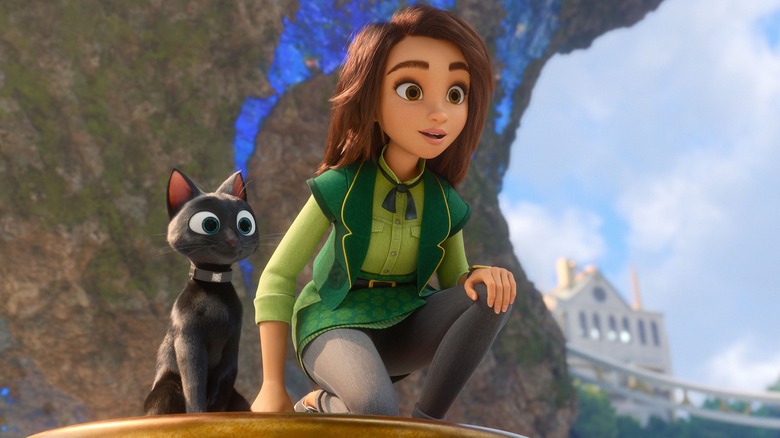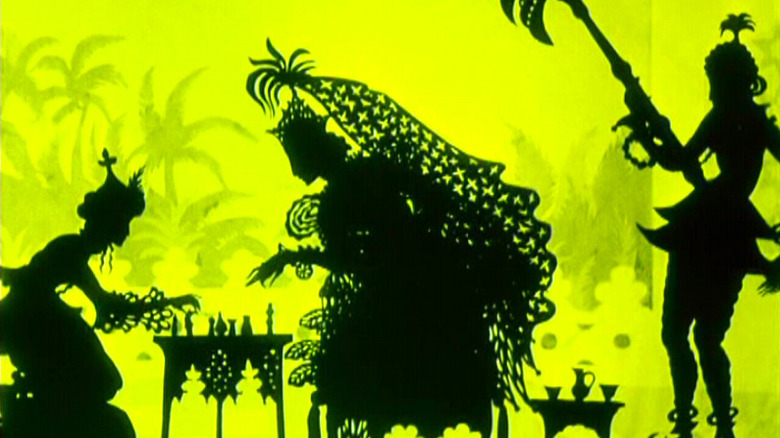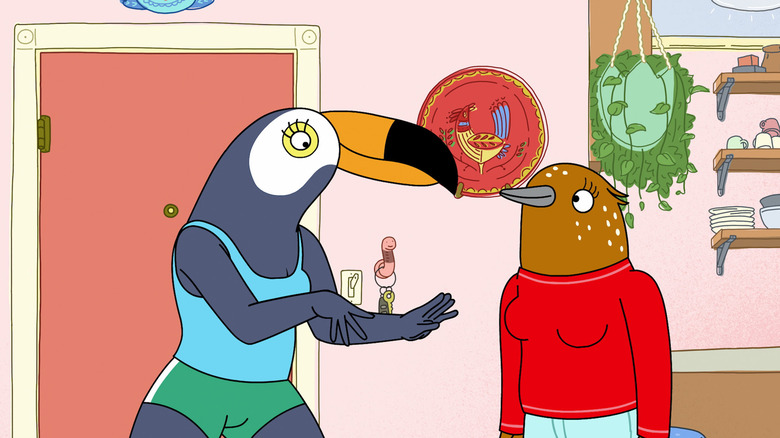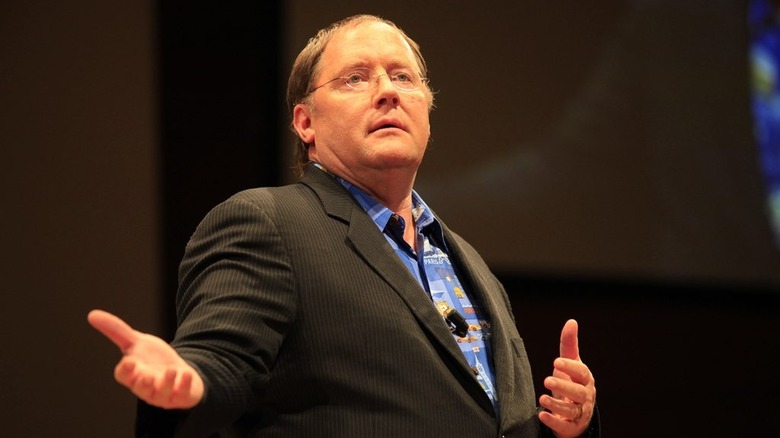
With the release of "Luck," the first foray into feature-length animation from Skydance, the world of animated cinema has another example of something we don't get all too often: a female director (Peggy Holmes) helming the project. We know how notoriously sexist Hollywood is. It's no surprise that female filmmakers continue to struggle, even as they make major steps forward and break glass ceilings. Yet, even as progress comes (albeit at a maddeningly incremental rate), it's still pretty shocking just how wide the gender gap is in the world of animation.
As noted by Women in Animation, an organization that "advocates for a world in which people of all gender identities share fully in the creation, production and rewards of animation," more than 60% of animation and art school students are women, and yet only 20% of the creative industry jobs are held by women. Women make up a mere 10% of director and producer roles in animation, and less than a quarter of animation workers overall. By comparison, according to a 2021 study by the Center for the Study of Women in Television and Film at San Diego State University, women comprised 17% of directors of the top 250 highest-grossing movies of that year (and that's down from 18% in 2020.)
Women In Animation still has a long way to go to achieve its goal of gender parity by 2025. So what is it about animation in particular that makes it so male dominant, even when compared to the rest of the film and TV industry?
The Pioneering Women Of Animation

The gender disparities in film are especially painful because women were at the forefront of the artform's development, helping to establish its artistic possibilities as much as their male counterparts. This is true for animation as well. The very first feature-length animated film was directed by Lotte Reiniger. 1926's "The Adventures of Prince Achmed" was entirely animated by hand by Reiniger, who manipulated intricate paper cut-outs to tell a lush story inspired by "The 1001 Arabian Nights." Reiniger's influence can be felt throughout the ensuing decades, from Disney's "Aladdin" to "Steven Universe."
Speaking of Disney, it's tough to discuss the history of animation in any form without understanding the seismic impact the House of Mouse had on the development of the form as a major industry-wide commodity. Much has been made about Walt Disney's politics and personal views, with Meryl Streep once infamously declaring him to be a "gender bigot". Initially, women hired at Disney's animation studio were put to work in the inking and painting department, which was considered less artistically worthy than the labour of the all-male animators. When Mary V. Ford applied to work at Disney as an animator in 1938, her rejection letter said that women "do not do any of the creative work in connection with preparing the cartoons for the screen, as that work is performed entirely by young men." The department was reportedly nicknamed "The Nunnery" because Disney only hired women for it (and typically young, good looking ones at that.) They were paid significantly less than their male counterparts ($26 - $32 a week compared to the $300 a week pulled in by the guys.)
Eventually, many women made breakthroughs into the animation rooms. Bianca Majolica was the first woman hired for the Walt Disney story department. Mary Blair's concept art helped to shape the aesthetic of Disney animation for decades. Retta Scott became the first woman credited in an animated Disney film. Even Walt Disney stated, "The girl artists have the right to expect the same chances for advancement as men, and I honestly believe they may eventually contribute something to this business that men never would or could." It's a remarkably forward-thinking statement from a man who became somewhat notorious for being a reported misogynist. Yet, while women made strides in animation at Disney, they were still paid less, kept out of directors' positions, and subjected to industry-wide sexism. Bianca Majolica faced immense harassment while working at Disney. In once incident, she was chased down the hall by her male colleagues, who then battered down the door of her office to continue berating her.
Things Are Getting Better For Women In Animation

Animation's gender gap is all the more curious given how widely American animation in particular has defined modern pop culture's representation of women. For many of us, the few female protagonists we saw on the big screen were Disney princesses. Yet it took until "Frozen" in 2013 for a woman to direct one of these Disney princess movies (Jennifer Lee, who is now the chief creative officer of Walt Disney Animation Studios). So many portrayals of gender and narratives of woman- and girlhood throughout animation -- from Belle to Lisa Simpson and beyond -- are through the prism of male creators. This is not to denigrate these characters, of course, but it is telling how often this pattern occurs throughout the decades. It does matter when women of all kinds can pioneer the stories we tell.
But things are ever-so-slowly improving. Consider Domee Shi's "Turning Red", a layered coming-of-age film about puberty, familial strife, and discovering your own path in life. Or "Loving Vincent", a stunningly beautiful experimental biopic animated entirely through oil paintings, co-directed by Dorota Kobiela. Things are even better in the world of TV, with ground-breaking women and non-binary showrunners leading the way, like Lisa Hanawalt of "Tuca and Bertie," N.D. Stevenson of "She-Ra and the Princesses of Power," and Rebecca Sugar of "Steven Universe." They remain in the disheartening minority of animation in America, but their impact is undeniable.
However, this shift has primarily happened for white women. Women of color are far less prominent in film and TV and their characters still defined wildly by whiteness (consider how many popular characters of color in animation are voiced by white people, and how it took until the death of George Floyd for producers to feel embarrassed enough about that situation to make changes.)
Animation Has A Harassment Problem

Of course, to fully explain the gender disparities in animation -- and any part of entertainment for that matter -- we must discuss the culture-wide epidemic of harassment, abuse, and discrimination. In October 2017, 217 women and gender nonconforming people in animation sent a letter to more than a dozen studios, including Disney, demanding an end to sexism and sexual harassment in the animation industry. As the open letter noted:
In the wake of the Harvey Weinstein scandal, many of the women who work in animation have begun discussing more openly issues that we have dealt with quietly throughout our careers. As we came together to share our stories of sexism, sexual harassment and, in some cases, sexual assault, we were struck by the pervasiveness of the problem. Every one of us has a story to share, from tossed-off comments about our body parts that were framed as "jokes" to women being cornered in dark rooms by male colleagues to criminal assault.
Animation is a relatively small industry, where everyone knows everyone and speaking out can often feel like putting your career on the line. Even in the supposed #MeToo era, many felt that their fears would be ignored and nothing would come of any allegations made. In a 2016 BuzzFeed report on Adult Swim's terrible track record with hiring women, a former employee noted that executive vice-president Mike Lazzo declared in 2011 that women in writers' rooms led to "conflict" rather than comedy. Some sources described an "aggressive office environment" defined by Lazzo's own actions that contributed to women feeling unwelcome in the creative sphere of Adult Swim.
This concern felt especially familiar when John Lasseter, the former chief creative officer of Pixar and Disney Animation, was forced to take a sabbatical after admitting his own long history of "missteps" in behavior towards women employees. It was reported that Lasseter's harassment, which included "grabbing, kissing, [and] making comments about physical attributes," was so well-known at the company that Pixar had "minders who were tasked with reining in his impulses."
After leaving the company in 2018 (though not before being allowed to stay in a consulting role for several months), Lasseter was almost immediately hired to head the newly formed animation division at Skydance. Indeed, while Peggy Holmes is not credited as the director of "Luck" in its trailers, Lasseter is referenced as "the creative visionary behind Toy Story and Cars." The animation industry, much like Hollywood as a whole, seems more concerned with consistently elevating the same handful of established white male voices, regardless of their abhorrent behavior towards women, than taking a chance on underrepresented talent. Who can blame women for not wanting to stick around in such a noxious situation?
None of this is specific to animation, but its concentrated force of misogyny and a lack of opportunities for non-cishet white male voices exemplifies the systemic rot at the heart of entertainment. The stories we consume would benefit from being as diversely told as possible, creating a more accurate reflection of reality than what we are all too typically offered. For that to happen, the industry must actively work to stamp out the plague of workplace harassment and terror that marginalizes so many.
Read this next: The 14 Best Animated Movies (That Aren't Made By Disney Or Pixar)
The post Why Are There So Few Women in Animation? appeared first on /Film.
0 Comments